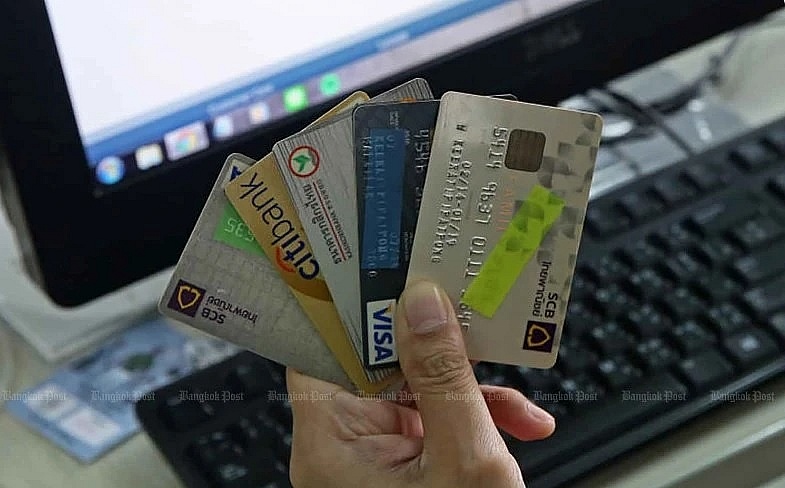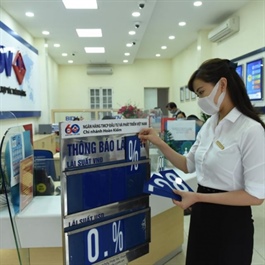Untapped potential in domestic credit card market
Untapped potential in domestic credit card market
There is a lot of untapped potential in the market for credit cards in the domestic market, said industry insiders and policymakers during a seminar to promote using cards and being part of a cashless society.

A customer pays using a credit card at a supermarket in Hai Bà Trưng District, Hà Nội. — VNA/VNS Photo |
The event in Hà Nội last week, was co-organised by the State Bank of Việt Nam's (SBV) Payment Department, the National Payment Corporation of Việt Nam (NAPAS) and the Lao Động (Labour) newspaper.
SBV Deputy Governor Phạm Tiến Dũng said the central bank has been working and improving on a legal framework to streamline non-cash payments and keep them secure. The central bank considers it a key objective of the banking sector to make it easier to get and use cards and reduce black-market lending.
Regulations have also been implemented to govern non-cash payment methods, in line with the Law on Credit Institutions, which was approved by the National Assembly, including payment setups and QR codes.
Lê Anh Dũng, the department's deputy director, said the rapid development of non-cash payment services in recent years has resulted in significant growth in the sector. As of March this year, there were over 150.6 million cards in circulation, a 3.29 per cent increase compared to the same period last year. Of which, over 106.7 million were domestic cards and 43.9 million were international cards.
In the first three months of the year, there were 15 card issuers in the domestic market with over 904,700 cards in circulation, an 18.37 per cent increase year-on-year, outpacing their foreign competitors who posted a more modest growth of just 9.53 per cent year-on-year.
There were 1.3 million transactions using domestic-issued cards in the first three months of 2024 with a total value of over VNĐ10 trillion, an increase of 75.43 per cent and 89.85 per cent, respectively. Meanwhile, foreign-issued cards reported growths of 27.26 per cent and 25.1 per cent during the same period.
However, according to industry insiders, Việt Nam still has great untapped potential in the card market. With a population of over 100 million, mostly in the young demographic age groups, a growing middle class and a boom in e-commerce and digital economy, there is plenty of scope to expand.
Domestic card issuers have enjoyed numerous advantages and benefits over the competition thanks to modern technology infrastructure, compliance to local security standards, low transaction costs and easier access for low-income customers.
SBV Deputy Governor Dũng said the central bank remains fully committed to developing non-cash payment services, including payment cards in the domestic market.
He advised credit institutions to invest in offering more sophisticated, safe and convenient payment services and work with local governments, especially in underdeveloped and remote parts of the country, contributing to comprehensive financial inclusion and reducing black-market lending.
He stressed the importance of enhancing the legal framework for non-cash payments and bank cards, upgrading the interbank electronic payment system, financial switching and clearing systems and bank payment systems to ensure the transactions are safe.
Other key areas include developing a versatile domestic chip card ecosystem and modern credit card products, establishing reasonable fee-sharing mechanisms to support fraud prevention tools and strengthening financial awareness and communication.
Nguyễn Quang Minh, NAPAS's CEO, said a contributing factor to the growth of domestic-issued cards in recent years is banks' simplified structure compared to foreign issuers. NAPAS, for its part, has been deploying new technologies for mobile payments, card digitisation and secure mobile transactions.
Despite a low number of frauds being reported, the corporation proposed that payment service providers should be allowed to keep a portion of their pre-tax profits as reserve funds for any potential losses.

























